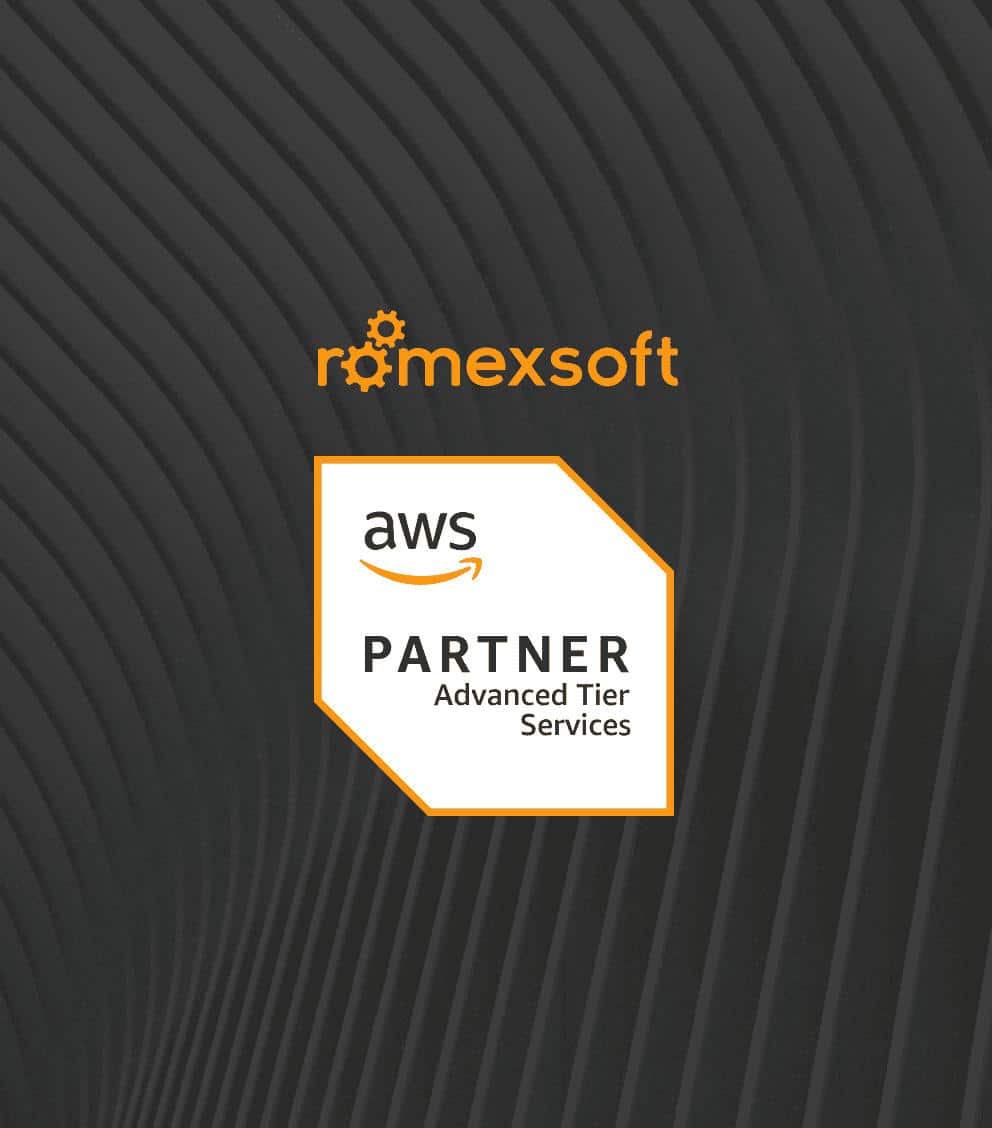Private Cloud Management Best Practices That Reduce Risks and Improve Uptime
A private cloud is a sensible choice for businesses that prioritize control, security, and cost predictability. Yet, achieving those requires the same automation discipline that hyperscalers use in their environments. Without it, many are bound to experience common Day-2 challenges: patch delays, scaling constraints, and fragmented toolsets, which soon hurt general performance and drive up costs. This article will shed light on the pitfalls of private cloud management, highlight benefits, and share proven best practices for creating a resilient private cloud environment.
The blog gives an overview of:
- principal Day-2 challenges in cloud management
- benefits of strong private cloud management
- best practices for efficient cloud operations
- 10-step model of resilient private cloud control

Table of Contents
Private cloud is a computing model in which dedicated infrastructure is provided solely for a single organization. It offers isolated environments with stricter control over security and general performance, while public cloud platforms accumulate resources across all tenants. Choice in favor of private cloud management undoubtedly benefits enterprises, which operate under regulatory constraints or prioritize predictable infrastructure costs.
The types of private cloud solutions encompass the following:
- On-Premises Private Cloud. Provide full control over key policies in cloud environments, such as hardware, networking, and access policies, as it is maintained within a data center that belongs to an organisation.
- Virtual Private Cloud. Utilize the scalability benefits of public cloud by operating in a logically structured and isolated private environment with dedicated compute resources.
- Managed/Hosted Private Cloud. Enable organizations to offload Day-2 tasks, while still retaining dedicated resources, with both infrastructure and operational management provided by a third-party vendor.
The crucial point is to ensure that a private cloud estate is managed with the same automation-first discipline and data-driven oversight that hyperscalers apply to their platforms. In this case, companies will not fall into a trap of operational silos, hidden costs, or inconsistent service quality. Understanding such nuances forms a robust private cloud infrastructure, which improves general performance.
Table of Contents
Challenges that Threaten Private Cloud Management
Even the most carefully architectured private cloud will not live up to its full potential if Day-2 operations lack disciplined management. The most common operational and architectural risks, which often go unnoticed but seriously decrease return on investment (ROI) after initial deployment, are presented below.
Hidden TCO Drivers Beyond Deployment
Capital expenditures (CapEx) for hardware are considered relatively straightforward to project. On the contrary, operational expenditures (OpEx) may be unpredictable and destabilize budgeting. They remain unstable because of numerous factors, such as license renewals, firmware and OS upgrades, and maintenance contracts in hybrid clouds. Without a clear, centralized view of how costs align with actual usage, private cloud teams are likely to be left with blind spots, which harm long-term financial planning, as compared with the predictability of public cloud.
Underutilized or Overprovisioned Resources
Private cloud environments often struggle with resource inefficiency. Teams tend to overprovision virtual machines and containers, willing to decrease the risk, but what this does is detract from CPU, memory, and storage. At the same time, expenditures on Idle dev/test environments and zombie workloads are not rational in terms of quality and benefit for servers. Unless automated rightsizing and real-time utilization analytics are provided, capacity planning turns into a reactive one, causing either resource waste or bottlenecks in hybrid clouds.
Patch and Lifecycle Drift
Lifecycle management is seen to be a weak spot in many private cloud organisations. Along with firmware mismatches, different patching schedules across clusters may complicate the established workflow. On top of that, manual updates also aggravate the gap between the expected result and the reality in production. It not only enlarges the attack surface but also causes massive compatibility problems between hypervisors, operating systems, and control planes, increasing compliance risks.
Monitoring Blind Spots
Modern standards of private cloud organisation are constantly evolving, which is why traditional monitoring systems are bound to fall short in modern private cloud environments unless they are regularly updated and adapted. Professionals frequently struggle to correlate metrics across virtualized hosts and edge nodes, letting either unnecessary alerts or, more dangerously, missed critical events happen. Only by a complex approach to collecting metrics, logs, and traces is it possible to optimize RCA and strengthen SLA confidence, similar to such practices in public clouds.
Limited Automation of Day-2 Operations
Although infrastructure-as-code has simplified initial provisioning, most Day-2 operations remain manual in contrast to public clouds. Such core stages as remediation, scaling, performance tuning, and cost management are often guided by outdated hybrid clouds runbooks or tribal knowledge. Weak API support is also a troublesome issue, because it limits integration with DevOps pipelines and further development of operations automation.
Security and Compliance Gaps
Security controls are rarely applied consistently across all components of a private cloud stack, which makes role-based access control (RBAC), encryption, and audit logging be misconfigured or even fall out altogether. Additionally, vulnerability scanning and patch verification are mostly non-automated or partially automated, as a result of which regulatory compliance efforts become reactive, audit-heavy processes rather than continuous and policy-driven.
Tool Sprawl and Skill Gaps
Managing private cloud infrastructure involves an overlapping set of tools, namely covering virtualization, networking, back-ups, and identity management. It is a common practice to include these stages even though they are adopted ad hoc and bring about unnecessary complexity. The tool sprawl also hinders the productivity of interaction between teams, as well as drains the budget. The problem is further exacerbated by a shortage of the specialized skills required to manage platforms like VMware, Nutanix, or OpenStack.
Scaling Bottlenecks
Scaling in private cloud organizations comes with challenges because of their physical and architectural limits, which are not observed in public clouds. Teams have to take into account that adding capacity always means obtaining new hardware and provisioning, which takes careful planning and time. Given that placement across clusters and availability zones becomes more complex as workloads shift, dynamic schedulers or elastic infrastructure patterns are in great demand. What they help to do is avoid under-provisioning during spikes and vice versa, overbuilding for peak loads in most hybrid clouds.
Vendor Lock-In and Platform Rigidities
One must be careful when making early technology decisions, as they can limit future flexibility in a cloud environment. Moving from one ecosystem (for example, VMware) to another (such as OpenStack or Nutanix) is rarely straightforward and typically involves downtime, complex migration work, and re-certification of workloads. Over time, operational processes and tooling become tied to a single vendor’s platform, creating long-term dependencies that are difficult and costly to unwind.
Change Management and Governance Deficits
Uncontrolled change propagation may invisibly threaten many private clouds, as long as their configuration updates are made manually, without documentation or team review. Performing work in this manner seriously impairs productivity and causes compliance issues and broken dependencies. In this case, Git-based version control for infrastructure blueprints or automated policy enforcement can regain lost positions in hybrid clouds and organise resources needed to scale reliably.
Benefits of Strong Private Cloud Management
A private cloud solution, based on automation, observability, and governance, offers far more than infrastructure control as it is. The structure has every chance to evolve into a cost-efficient and secure basis that comes in handy both in business-critical workloads and general IT performance.
- Predictable Budgets and Cost Forecasting. Real-time insight into usage and lifecycle costs allows IT leaders to move from reactive budgeting towards efficient financial planning. Such a model relies on cost-per-workload models, built on consistent tagging and monitoring, and will better anticipate upcoming expenses in hybrid clouds. Another positive aspect of this approach is preventing unexpected costs tied to license renewals, infrastructure upgrades, or overprovisioning.
- Faster Recovery and Shorter Ticket Queues. If patching backups and remediation tasks are automated, common support obstacles are easy to overcome within a private cloud. Teams, therefore, focus more on system optimization and problem-solving activities, which significantly drops the overall burden on the service desk.
- Continuous Compliance with Less Audit Overhead. Integrated controls and detailed audit logs in private clouds maintain continuous compliance with frameworks such as HIPAA, SOC 2, and PCI-DSS. With the help of computing resources, teams can easily generate the required documentation with minimal disruption instead of rushing to pull evidence together before each audit.
- Scalable Performance Without Capital Waste. Private cloud structure becomes elastic and cost-efficient in case policy-driven provisioning and dynamic rightsizing are provided. Workloads receive the exact amount of resources they require, while unnecessary capacity is minimized.
- Stronger Security Through Zero-Trust Enforcement. Security of the private cloud can be reinforced with unified access control, punctual privilege allocation, and secure configuration baselines that reduce the attack surface across the private cloud. Considering that zero-trust policies are consistently implemented, they stay effective regardless of the underlying virtualization or networking technology.
- SLA Reliability via Integrated Observability. The process of detecting anomalies and maintaining service-level commitments can be refined through effective pipeline monitoring, including compute, storage, and application layers covered in the cloud environment. It proves that observability goes far beyond a simple diagnostic tool and turns into a foundation for achieving reliable uptime.
- Quicker Feature Delivery and Change Readiness. Automated workflows support frequent updates, infrastructure versioning, and lower risk during releases. By integrating private cloud management with DevOps toolchains, infrastructure changes become both safer and faster. Automated workflows facilitate frequent updates and infrastructure versioning, lowering risks and downtime during releases.
Best Practices for Effective Private Cloud Management
To maximize ROI and support long-term scalability, cloud environments are to be managed with the same rigour and discipline as any hyperscale cloud. The practices mentioned below address the most pressing Day-2 operational challenges and provide strategies for building secure, resilient, and cost-efficient infrastructure of hybrid clouds.
Establish a Unified Asset Inventory and CMDB
A complete asset inventory is considered to be the foundation of any private, public, or hybrid cloud. Automated discovery tools, if they feed into a continuously updated Configuration Management Database (CMDB), allow teams to fully observe storage, network, and computing resources. Standardized metadata tagging, organized by workload type, ownership, and lifecycle stage, proves to be great for tasks including cost tracking, consistent policy enforcement, and compliance reporting across all environments.
Enforce Policy-Driven Automation
Day-2 operations bring value if they are automated, not improvised. Upon adopting Infrastructure as Code (IaC), teams can embed configuration, deployment, and patching policies right into delivery pipelines, ensuring changes are safe and independent from the manual runbooks. Productive work with standardized blueprints and service catalogues can further shield the company from the risks related to provisioning drift or human errors between hybrid cloud layers.
Implement Continuous Cost and Capacity Monitoring
Resource waste and runaway costs are inevitable without proper analytics. One of the purposes of real-time dashboards, thus, is to present utilization and cost data at the workload, team, and departmental level to manage data wisely. Automated rightsizing tools help to uncover idle or orphaned resources in a private cloud, while anomaly detection alerts teams to unusual usage patterns before they escalate. A combination of those instruments makes it easier to track budget utilization processes or overall performance.
Centralize Observability and Incident Management
Consolidated observability is a key step to reliability and fast recovery. Metrics, logs, and traces must naturally flow into a unified monitoring platform that covers hypervisors, containers, and computing resources. This integration allows correlating infrastructure events with application performance and speeding up root cause analysis. Additionally, automated anomaly detection and alert deduplication reduce the severity of incidents or response time in a private cloud when they occur.
Maintain Patch and Configuration Baselines
It is critical to have structured patching strategies, not reactive ones, so establishing baselines for each hypervisor and OS type can be seen as a way out. Operational risk can be reduced, at the same time, by coordinated maintenance windows and rollback procedures in hybrid clouds. It is advisable to use automated compliance scans for detecting drift from hardened baselines (e.g., CIS Benchmarks) and preserving the strong security of a private cloud.
Use Role-Based Access Control and Just-In-Time Privileges
Access control remains one of the most critical security layers of private or public clouds. In the first type, enforcing least-privilege policies across APIs and consoles is beneficial as it minimizes operational risk. Elevated roles should be granted through just-in-time (JIT) access for this purpose, with automatic expiry and full audit logging applied. Teams shouldn’t lose sight of general control across private cloud systems, so identity providers with mandatory MFA will unify security measures across environments.
Standardize Backup, Recovery, and Disaster Recovery
Data protection in cloud environments begins with resilient and automated backup strategies. With that objective in mind, they should be immutable, geo-redundant, and automatically verified to reach integrity. Both recovery objectives (RTO and RPO) need to be tested regularly against business SLAs to make sure they live up to the real conditions of a current private cloud. It is also recommended to document full-stack recovery playbooks in Git for consistency and an easier audit process.
Integrate with DevOps and CI/CD Toolchains
A private cloud must integrate seamlessly with modern workflows rather than stay isolated. Such instruments as Terraform, Ansible, or Jenkins successfully deal with APIs and integration points. Development teams can safely provision resources on a self-service basis if built-in policy guardrails operate well. When Application deployment cycles keep up with main infrastructure updates, the overall control will not be compromised.
Perform Regular Governance Reviews
Maintaining the operational health of a private cloud requires complex and ongoing oversight. One of them is a quarterly review, which covers tag hygiene, policy compliance, and incident trends. These sessions unite feedback from platform, security, and compliance teams to make further adaptation of governance practices more relevant and needs-driven.
Choose Platforms with Extensibility and Open APIs
The long-term success of private cloud administration hinges on openness and flexibility. It is advisable to select platforms like OpenStack, VMware, or Nutanix to improve appropriate third-party integration options and observability hooks that support automation. Closed systems, by contrast, can restrict growth and limit innovation, so opt for container-native architectures, which reduce reliance on excessive VM deployments.
Romexsoft’s 10-Step Private Cloud Management Model
Along with these practices, applied in any private cloud environment, working with an experienced cloud consulting provider can accelerate results and reduce operational risk more effectively. Romexsoft’s 10-step model is the most relevant for those who are seeking to achieve measurable outcomes.
- Assess the Current State and Set Maturity Goals. Each transformation begins with a comprehensive discovery approach, where ServiceNow CMDB and AWS Resource Explorer are used to map each workload of the private cloud and note platforms or tools in use. Once operational gaps are identified, they can be converted into a practical improvement roadmap with measurable goals, enabling automated patching across all clusters within a set timeframe.
- Establish a Standardized Tagging and CMDB Foundation. Although primary consistency is built into the system from the very beginning, Terraform, AWS Config, and Ansible apply metadata tags for environments more efficiently in an automatic way. These tags are embedded directly into CMDB systems and cost dashboards to match assets to accountability, reporting, and compliance requirements of private clouds.
- Automate Infrastructure Provisioning and Configuration. Infrastructure resources are provided through Terraform blueprints that guarantee predictable compute, storage, and networking. GitOps workflows in GitHub Actions deal with every single change in private clouds to make it auditable and noticeable. This complex approach results in dev, staging, and production environments remaining in sync.
- Unify Observability and Logging. Monitoring and logging are mainly centralized through the integration of Amazon CloudWatch, CloudTrail, ELK Stack, and Grafana. This observability layer is able to connect infrastructure events in a private cloud with application performance, while automated routing ensures a reduction in anomalies and maintains SLA targets.
- Streamline Patch Management and Compliance Enforcement. Patch baselines for each OS and hypervisor family are established beforehand. They work in tandem: AWS Systems Manager Patch Manager operates tightly on rolling updates whilst CIS Benchmark tools conduct constant scanning for drift, letting compliance and security be without manual checks.
- Secure Backup, Disaster Recovery, and Immutable Storage. Resilient backup and recovery are vital to the mentioned process in private clouds. AWS Backup and S3 Object Lock automate retention and immutability, and Veeam conducts recovery tests in isolated sandboxes. It is done to verify that RPO and RTO targets are achievable and full-stack restoration works without disruption.
- Harden Security with RBAC and Just-in-Time Access. Access is strictly controlled by integrating AWS IAM with identity providers like Okta. Here, RBAC policies are the least-prioritized, but just-in-time admin access is implemented via Teleport with MFA, giving full visibility into every privileged action of the private cloud.
- Optimize Costs and Resource Utilization. Such computing resources as AWS Cost Explorer, CloudHealth, and Grafana dashboards are mainly responsible for budgeting. To keep expenditures under control without sacrificing performance, automated rightsizing matches workload demands, while idle-resource shutdown policies prevent unnecessary spending.
- Integrate with DevOps Pipelines. Private cloud provisioning is embedded right into CI/CD workflows through Terraform modules, Jenkins, and GitLab CI. Open Policy Agent (OPA) carries security and cost controls at deployment time, allowing delivery cycles to occur faster without compromising governance.
- Review Governance and Drive Continuous Improvement. Governance reviews take place quarterly to supervise patch compliance, cost efficiency, and incident trends. Teams can use Confluence, Miro, and KPI dashboards to upgrade the platform, security, and financial state altogether. Overall, these instruments refine automation and reset baselines to make private cloud evolution closer to business priorities.
Private Cloud Management FAQ
Managed private cloud services represent a private cloud environment that a third-party provider fully or partially operates. The infrastructure itself remains dedicated to a certain organization, but core operations, including provisioning, backups, security, etc, are taken over by a trusted provider. By applying this approach, companies take advantage of an isolated cloud solution and maintain flexibility, often associated with public clouds, without being burdened with day-to-day operational chores.
Yes. In a private cloud system, one is in charge of the entire infrastructure stack, so backup and disaster recovery (DR) needs to be organized prudently with some extra tools applied. In contrast to public clouds, where backup and DR capabilities are often built in from the very beginning, private clouds require full responsibility for setting up these safeguards. In other words, snapshot policies, replication, and immutability must be tailored to the environment. Testing recovery processes, same as aligning RPO/RTO with SLAs, are also as important as planning to maintain stable performance and optimize expenditures.
Licensing costs can be one of the unpredictable aspects of public or private clouds. Preventing unanticipated spikes entails centralizing cost tracking and linking it to tagged workloads and assets. Each license-dependent component, in particular, the hypervisor, operating system, and backup solution, should be connected to its renewal cycle. Real-time dashboards not only substantially help in tracking license utilization in private clouds, but also provide forecasts about future budgeting.
Despite occasional exceptions, a certain amount of re-architecture is necessary in both public and private clouds. It is possible to enlarge workloads to a public cloud through VPNs, Direct Connect, or hybrid tools. However, seamless bursting lies deeper in workload portability, compatible hypervisors, and shared network configurations. Unless IAM policies and automation pipelines are provided, organisational risks rise significantly while transferring from a private cloud to a public cloud. The best solution is to design workloads with cloud-agnostic templates and policy enforcement to have a reliable strategy within all layers of a private cloud.





